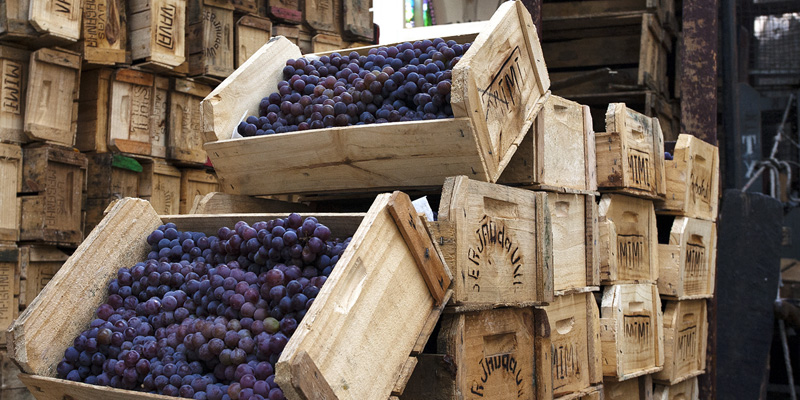Unlike much of what goes on in today’s wine industry, blends weren’t the result of a fad, a catchy PR campaign, a TV show, or a Top 40 song. The tradition of blending dates back millennia, to times when mixed vineyards served as an insurance policy against Mother Nature’s wrath, and a reliable harvest trumped flavor nuances.
Like a band of superheroes bonded together for the common good of mankind, a good blend can bring out the extraordinary qualities of ordinary grape varieties. Today, winemakers build blends by layering the unique attributes of different grapes, like color from Petit Verdot, spicy aromas from Cabernet Franc, or plummy notes from Merlot. It’s what makes modern wines balanced and hard to put down. Like X-Men or the Fantastic Four, the combined qualities of a blended wine are stronger (a.k.a. more delicious) together than the flavors or aromas of any single grape variety.
Despite the flavor-centric approach to blending that exists today, the history of blended wines has little to do with flavor. In fact, the practice of blending specific grape varieties for their flavor and aromatic qualities didn’t become popular until the 1800s, centuries after wine consumption, and even connoisseurship, became fashionable.
Historically, a desire for reliability, or for having wine every season, inspired the blend, especially the Bordeaux blends that are now replicated worldwide. Like having the Fantastic Four on retainer, planting a blend of grapes acted as an early insurance policy for farmers against destruction by pests, war, or bad weather.
In the chilly, maritime climate of Bordeaux, where early rains can halt ripening and late springs can ruin a season at its onset, this insurance policy was key. With variable weather patterns that make ripening difficult for red grapes, blends provided vintners with more dependable yields, and more dependable wines. The five grapes allowed in red Bordeaux wine require similar but not identical nutrients, so interplanting them allowed winemakers to hedge their bets against Mother Nature. To this day, the practice continues to enable the region to yield exceptional wines in good vintages, and palatable wines in difficult years.
For example, Cabernet Sauvignon will have trouble ripening in a cold year, leaving vintners with underripe, acidic, and tannic grapes. Merlot and Cabernet Franc, on the other hand, can reach full ripeness with less heat and sun exposure. Blended together, the three create a tasty wine, and no fruit goes to waste. On the flip side, blending fully ripe Cabernet Sauvignon with less ripe Merlot both tempers the high alcohol of Cabernet and makes Merlot taste fruitier. Throwing Petit Verdot and Malbec — varieties with their own flavors and ideal ripening conditions — into the mix further insulates early Bordeaux growers and winemakers from potential devastation.
The Bordelaise weren’t the only early blenders in the wine world. Across European growing regions, planting a range of grapes was extremely popular, and ensured a stable crop every season. Chianti, the Sangiovese-based red of Tuscany, is still a blend, with up to 20 percent non-Sangiovese allowed in finished wines. Chateauneuf-du-Pape wines of the Rhone valley, crisp Italian whites, Spanish Rioja, and Portugal’s rich reds have likewise been blended for centuries. Similarly, most American vineyards were originally planted as field blends to guarantee a good harvest (and wine) in every vintage, despite planting grapes in a new climate.
Traditionally, interplanted vineyards were picked, crushed, and fermented together, giving early winemakers less control over the final flavor profile of their wines than we have today. While the flavors likely weren’t as nuanced and lovely as today’s blends, the balance of ripe and underripe grapes in field blends added balance.
While modern technology like irrigation systems can mitigate some vineyard uncertainties, blends still perform their insurance agency role today. Especially in difficult climates like the Finger Lakes of New York or Champagne, blending remains critical to producing high-quality vino. We’re lucky today that most winemakers can focus on blending for flavor, but if droughts, polar vortexes, and the jet stream start terrorizing vineyards, we’ll all be thanking the field blend once again.

